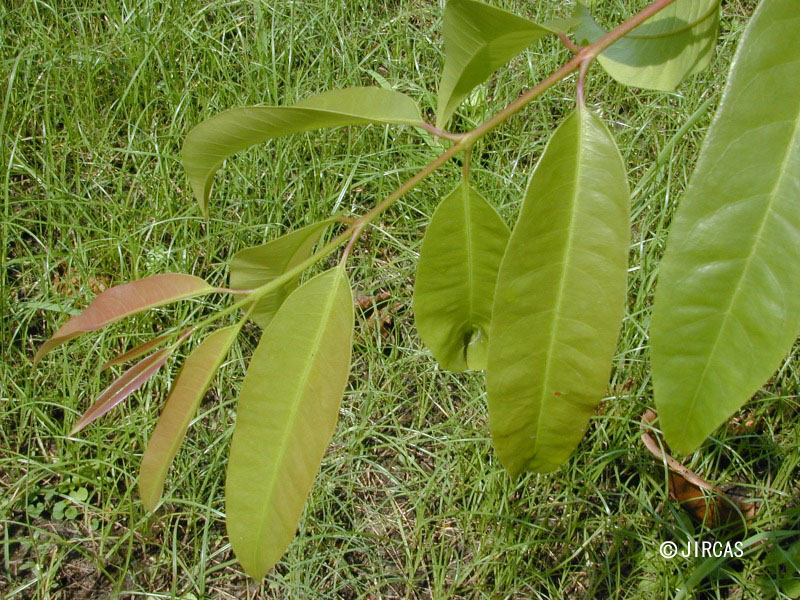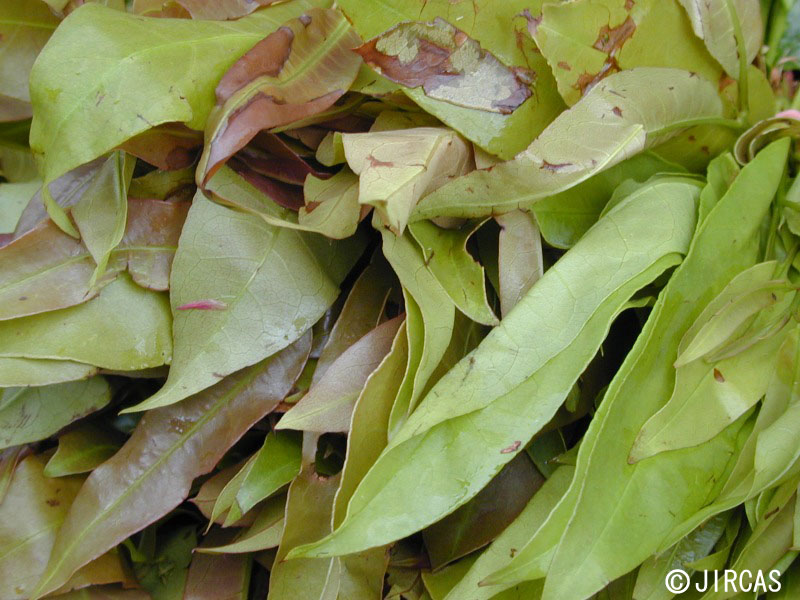Cratoxylum formosum (Jack) Dyer (Guttiferae)
- Scientific name
- Cratoxylum formosum (Jack) Dyer
- Family name
- Guttiferae
- Local name
- Tiew
Small to medium-sized deciduous tree, up to 10 m tall, trunk slightly fluted at base, bark grey, papery or scaly; twigs angled and swollen at nodes. Leaves simple, opposite; petiole 6–16 mm; blade membranous, narrowly to broadly elliptic, 5 × 3 to 17.5 × 7.5 cm; apex blunt or shortly pointed; base acute; reddish pink when young; midrib sunken above; lateral veins in 7–12 pairs, arching and joining at margin, distinct on both surfaces, especially below. Flowers 1.3–2.5 cm wide, borne on bare twigs, fragrant, petals pale pink. Fruit a capsule, 1.5–1.8 cm long; sepals covering only the capsule base.
Common in dry, mixed deciduous forest, at elevations up to 1,000 m a.s.l. Propagated by seed sowing or hardwood cutting.
Young leaves are sour and astringent. They are collected from wild plants during the rainy season and eaten raw or boiled with fish, pork, or mushrooms in dishes such as kaeng hed-pore (Thai mushroom soup).
Young leaves are sour and astringent. They are collected from wild plants during the rainy season and eaten raw or boiled with fish, pork, or mushrooms in dishes such as kaeng hed-pore (Thai mushroom soup).





